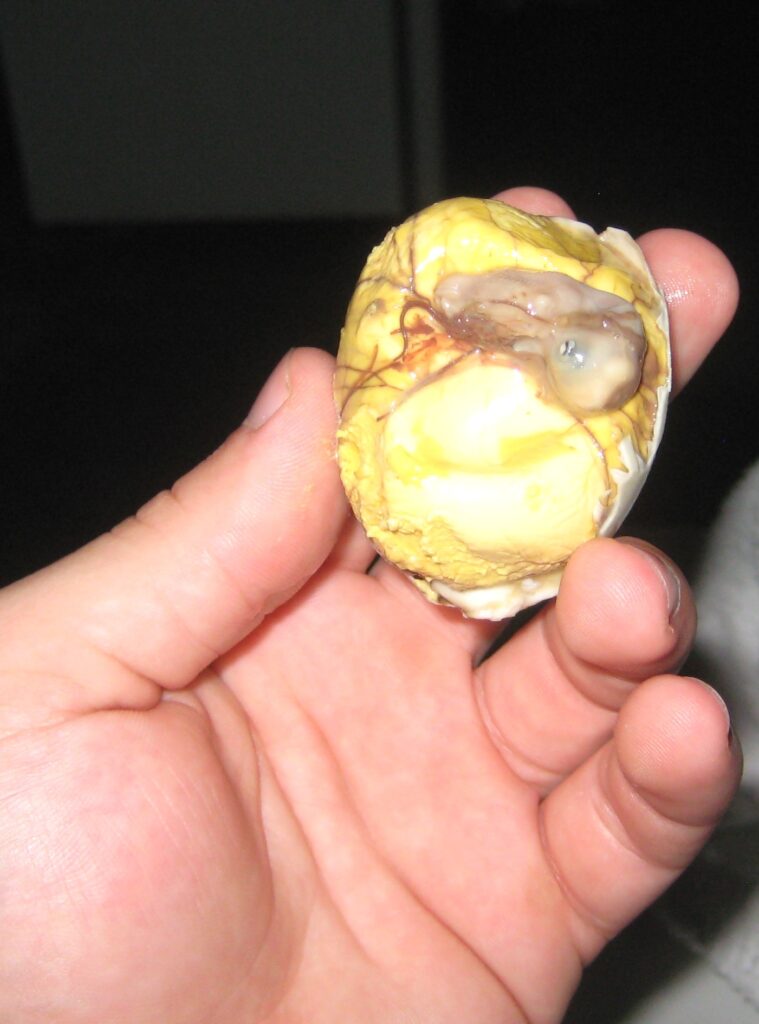Text and Photos by Henrylito D. Tacio
Although it ranks second only to chicken for egg and meat production, duck is also an important sub-sector of the Philippine poultry industry. It provides employment and income-generating opportunities for Filipinos, particularly those in the rural and marginal areas.
Unknowingly, duck production is one of the most profitable livestock industries in the country, mainly because of its egg, which can be marketed through different channels. But one disadvantage of duck eggs is that they have a fishy odor and flavor, which most people don’t like.
This is probably the main reason why most duck eggs are processed into two major Filipino delicacies: balut (a fertilized egg with a nearly developed embryo inside that is boiled and eaten in the shell)and the salted egg (itlog na maalat).
It might be unacceptable to most foreigners, but for Filipinos, balut is one of the country’s most treasured delicacies. Indeed, they enjoy this delicacy popularized by a small town in Pateros, Rizal.
Making balut is native to the Philippines. A similar preparation is known in China as maodan (literally meaning “feathered egg”), and Chinese traders and migrants are said to have brought the idea of eating fertilized duck eggs back from the Philippines.
However, the knowledge and craft of balut-making have been localized by the balut-makers (magbabalut). Today, balut production has not been mechanized in favor of the traditional production by hand.
Named after the Filipino term, which means “wrapped,” balut has been touted as an aphrodisiac as it boosts libido. Studies have shown that balut contains 12.6 grams of protein, 181 calories, and good sources of Vitamin B1 and B2, minerals, niacin, beta carotene, and other supplements.
Balut is common on street drinking sessions and just chatting with friends late nights. Generally, balut is being sold mostly when the street lights are on by vendors in baskets covered with thick foams and cloths to keep them warm.
Generally, balut is eaten with a pinch of salt, though some balut-eaters prefer chili and vinegar to complement their egg. The egg is savored for its balance of texture and flavor; the broth surrounding the embryo is sipped from the egg before the shell is peeled, and the yolk and young chick inside can be eaten. All of the contents of the egg are consumed.

“This food is the defining factor of all exotic foods in the country,” one foreigner commented. “It has made the Philippines unique from all of the countries in the world. Hopefully, in the future, the world will be ready for it and that the Philippines will make it an international phenomenon.”
Balut has been the “shocking” topic of some television shows because of its taboo nature in some Western cultures. In two episodes of Survivor: Palau and two episodes of Survivor: China, separate challenges featured attempts to eat this fertilized egg. Similarly, Fear Factor frequently uses balut as a means of disgusting contestants. The Ultimate Fighter: Team Nogueira vs. Team Mir featured balut eaten by several contestants after its introduction by a Filipino-American fighter Phillipe Nover.
Recently, balut has entered higher cuisine in the Philippines by being served as appetizers in restaurants: cooked adobo style, fried in omelets, or even used as filling in baked pastries.
Like balut, salted egg (itlog na maalat) is now well accepted by Filipino consumers. In fact, it is a common feature in Filipino dining tables, especially during breakfast. It can be eaten alone or with steamed rice or mixed in salad style with diced tomatoes and onions.
Salted egg is also used as an ingredient in pastries and toppings on bread and other bakery products, especially bibingka. In China (where it is eaten with congee), the yolk of salted egg is highly prized as it is used in mooncakes to symbolize the moon.
Eggs contain nutrients essential to our body’s growth and development. Salted eggs are packed with nutrients. Compared to fresh egg, balut, or century egg, salted egg is highest in calcium (120 milligrams), carbohydrates (4.4 milligrams), ash (202 milligrams), and thiamin (0.74 milligrams).
So popular is the salted egg that Filipinos who are now living or working abroad are looking for it. A study conducted by Dr. Jovita M. Datuin of the Don Mariano Marcos State University showed that the Philippines is already exporting processed duck products, including salted eggs, to Kuwait, the Arabia Peninsula, Bahrain, and even the Trust Territory in the Pacific Islands.

